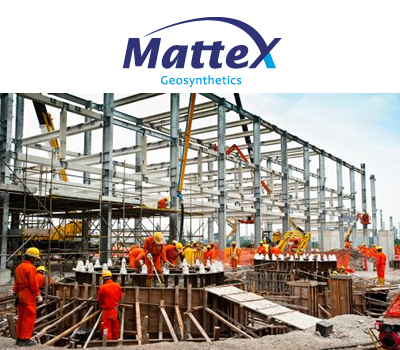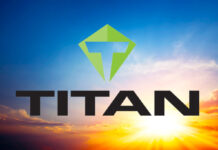
The Middle East and North Africa (MENA) region, and in particular the traditional Gulf Council Cooperation (GCC) states (e.g., United Arab Emirates, Saudi Arabia, Qatar) have played a strong role in the geosynthetics field for many years. Most often, however, recognition has been given only to companies active on the raw materials side of the business, such as the extraction of petroleum and natural gas, which are subsequently used to manufacture polymers, which in turn influence the properties and performance of geosynthetics manufactured everywhere.
But that is an incomplete picture of the region. Geosynthetic manufacturers are growing there too, and they are influencing the trend towards greener infrastructures throughout the Gulf states and the larger MENA region—which is home to some of the world’s busiest and most ambitious construction and engineering work.
The continued expansion of Mattex Geosynthetics, headquartered in Dubai (UAE), is emblematic of the region’s growing influence on the manufacturing side of geosynthetics.
INCREASED CAPACITY
By the end of the first quarter of 2013, Mattex Geosynthetics expects to have its fourth plant on line with a strong focus on the production of geotextiles. The new 110,000 m2 facility in Al Jubail (Kingdom of Saudi Arabia) will extrude polypropylene high tenacity fiber for sale internationally as well as produce needle-punched, nonwoven geotextiles and thermally bonded polypropylene geotextiles. The range of geotextile weights will cover 70 – 1200 g/m2, and roll widths will extend up to 6m.
It’s a large array of production capabilities, giving the company targets in commodity, niche, and large-scale engineering projects.
The Al Jubail plant, which will focus primarily on nonwoven geotextile production, is part of the company’s increasing strength in geosynthetics. A sister division (established 1996) at Mattex has a sizable market portfolio in carpet backing and synthetic turf backing. Its geotextile business has developed in the last decade and is now expanding quickly.
Two plants in Jeddah (KSA) and the Dubai facility also produce woven geotextiles.
Philippe Grimmelprez, who many in the geosynthetics field already know from his years of international work, has spent the last two years helping bring Mattex Geosynthetics’ operations into full bloom. He notes that with the new added capacity the company will still focus on its expanding market in the GCC and neighboring states, but that export contracts are being finalized in Europe, Asia, India, Africa and the Americas.
Offices in Belgium, China, South Africa, Australia, New Zealand, and two in the United States are providing the export support for the core products of GeoMatt (nonwovens), TerraMatt (wovens, filtration), and AgroMatt (agriculture applications).
WORKING AT THE SOURCE
One of the advantages that manufacturers in the Gulf region may enjoy is the immediate proximity of so many raw material producers. Mattex has located all four of its facilities within a few miles of resin producers. This is helping keep costs down, a fillip for commodity projects, while investment in greater manufacturing capabilities is giving the company an angle in ever-larger projects and more advanced, value-added engineering opportunities.
Also, being located so close to the source of raw material production has increased the company’s green status. A significant amount of research has emerged in recent years to show how geosynthetics have created not just stronger but more sustainable infrastructures. One of the areas in which geosynthetics have excelled is on carbon footprint reduction. Products like geotextiles and geogrids significantly reduce the need for aggregate materials, which nicely reduces the high volume of pollution associated with aggregate production and transportation. With raw material production literally just down the road, Mattex can also promote its carbon footprint advantage even on the transportation of those raw materials.
Another aspect to the Middle East, North Africa and Gulf states that one should pay attention to is the growing geosynthetic engineering education initiative. It is being supported by more active universities, public agencies, and conferences such as the UAE-based Geosynthetics Middle East (which will hold its 6th annual edition in 4Q 2013). The International Geosynthetics Society (IGS) also has more members joining up from and a new chapter in the region (official announcement forthcoming).
All of it points to larger role for the region in its interaction with the geosynthetics field—a role much larger than just raw materials.
For more information on Mattex Geosynthetics’ work, visit www.mattexgeo.com.
Chris Kelsey is the editor of Geosynthetica.net.
31 January 2013












please send details of agent, dealer , supplier in Abu Dhabi UAE